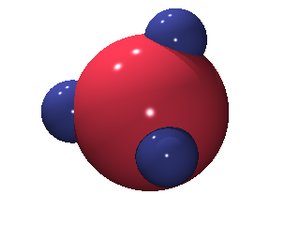Anisotropic particles with tetrahedral symmetry: Difference between revisions
Jump to navigation
Jump to search
Carl McBride (talk | contribs) m (→References: Added a recent publication) |
Carl McBride (talk | contribs) m (→References: Slight tidy) |
||
| Line 18: | Line 18: | ||
<references/> | <references/> | ||
'''Related reading''' | '''Related reading''' | ||
*[http://dx.doi.org/10.1063/1.3393777 Flavio Romano, Eduardo Sanz, and Francesco Sciortino "Phase diagram of a tetrahedral patchy particle model for different interaction ranges", Journal of Chemical Physics '''132''' 184501 (2010)] | *[http://dx.doi.org/10.1063/1.3393777 Flavio Romano, Eduardo Sanz, and Francesco Sciortino "Phase diagram of a tetrahedral patchy particle model for different interaction ranges", Journal of Chemical Physics '''132''' 184501 (2010)] | ||
[[category: models]] | [[category: models]] | ||
Revision as of 12:17, 12 May 2010

The phase diagram of the tetrahedral Kern and Frenkel patchy model exhibits the following solid phases[1]: diamond crystal (DC), body centred cubic (BCC) and face centred cubic (FCC). The gas-liquid critical point becomes metastable with respect to the diamond crystal when the range of the interaction becomes short (roughly less than 15% of the diameter).
In contrast to isotropic models, the critical point becomes only weakly metastable with respect to the solid as the interaction range
narrows (from left to right in the figure).
See also
References
Related reading
